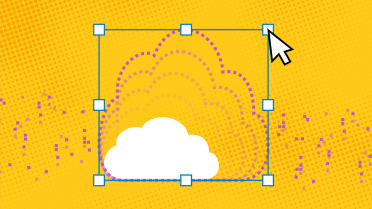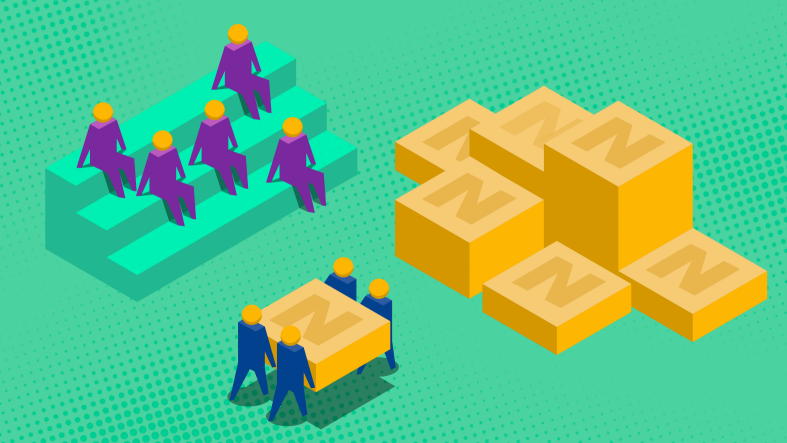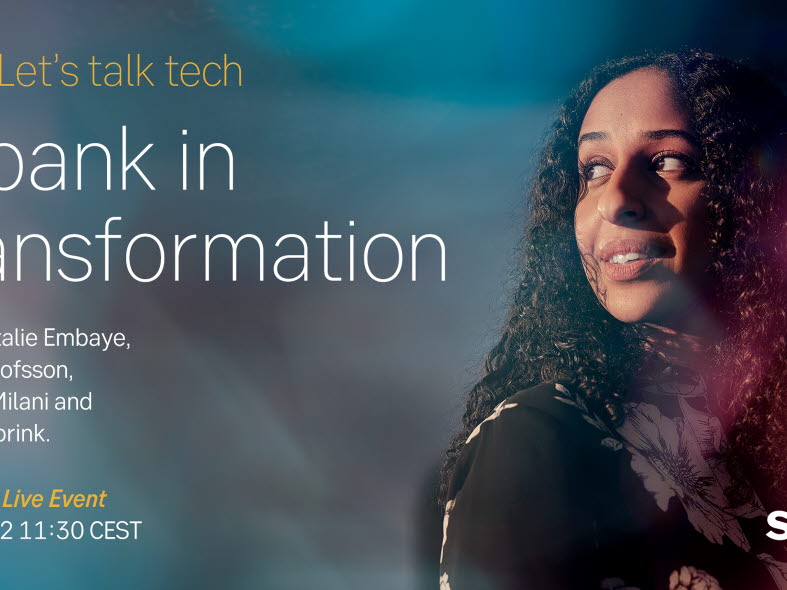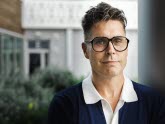Developing tech at SEB offers many exciting challenges for talents involved, like SEB Neo – a new application that aims to solve the problem of young kids being shut out of the new, cashless society. Instead of getting money in the hand or an allowance in the piggy bank, more and more parents handle their kids' economy by paying for them or lending out their own credit card. This means children miss out on training and insights into how money works.
SEB Neo is a new type of account, card and mobile app that welcomes children into the digital economy and guides them as they mature financially. Our goal is to encourage children to manage and understand their economy in a safe and engaging way. With just the right amount of involvement from their parents, we're guiding them to be a part of a responsible and sustainable economy.
Does it sound like an important and exciting assignment? During our LinkedIn Live event “Let's talk tech - A bank in transformation” you'll learn more about the project and how we develop financial tech together - with 150 years of experience of banking and IT at the highest level. Sign up here!
With SEB Neo we can offer a platform with high flexibility and reusability. A platform that we can scale up in line with our customers' current and future needs. A dynamic tool that gives families the ability to manage their child's finances and helps children understand economics in a digital world. This is SEB Neo.
SEB Neo is SEB's first application built on top of SEBx's Banking-as-a-Service platform, and works based on several concepts: cloud native, new customers, new mobile platform, new brand, new team and new ways of working.
Starting with cloud native: we are one of SEB's first projects that is completely cloud native, meaning it is specifically developed and managed within a cloud environment.
Secondly, we are working towards a new customer group, with a new mobile platform, for a new brand, with a new team and new ways of working. And what does that mean? Obviously, that when everything is new, it comes with a lot of uncertainties.
This project would have been impossible if we hadn't found new ways of working. We have divided that way of working into three important steps: one- piece flow, transparency and public prognosis.
One-piece flow
One-piece flow essentially means working on one thing at a time. Not one thing per person, but one thing for the entire team. We work together through the challenges, and make sure everyone is on board. For example, when we have interviews with our potential customers – children – it is led by a customer experience specialist. But everyone from developers to product and business owners participate and help. Everyone needs to know what the customers say, and what the issue is that we are solving with this product. We cannot all solve different issues; we have to work and solve them together.
Since we don't know that much yet, we have to try new things and constantly refactor because we discover shortcomings. Not shortcomings as in things that are bad, just that they solve the wrong things. We are constantly discovering new architectural patterns, and so we must update ours to follow that. The code being produced always has to meet the new knowledge. All this taken into consideration also requires us to build everything test driven – we have automatic tests for everything and everything that can be automated is automated, otherwise the process would be extremely slow.
We work according to “no estimates”. We don't guess or estimate how long something is going to take, we take one feature at a time, according to the one-piece flow, and break it down together into parts until we reach “work items”. These work items should never take longer than one working day to complete, and preferably significantly less.
What we then do is calculate how fast items flow through the system, how much growth we have on our work items based on what we thought. When we have done that, we can start creating prognoses. A prognosis can for example be that we have an 85% chance that a feature takes two weeks to complete. We never reach 100% probability until everything is done. Once again, we are back to our core strategy: we don't guess, we build on data. Guessing doesn't create value, but breaking down parts together in our team does. That is development.
Transparency and public prognosis
Here is the issue: we don't have time to report everything all of the time – we have to work. So, how can people trust us? The answer is transparency. We want people to know as much as possible. This also aligns with the third step, which is public prognosis. We want to make our prognoses public so that everyone can feel that they are a part of the process and knows what is happening, for example when things are changing. We also have internal “show and tells”, to which colleagues from the entire company are invited to attend and where we discuss the process. Not only is this a way for us to gain a better understanding for ourselves and our process, but it also allows others to be part of the process and learn what we do, how we do it, and why. We encourage everyone to gain an understanding of what we do and share their opinions about the product and the process. This autumn we are also planning on making all stakeholders beta users for the app, so that they can see the product changing in real time.
Upcoming SEB LinkedIn Live event
Techies with a thing for business? Listen in on how we at SEB develop the next generation of financial tech and what opportunities awaits if you join u
Sign up here






